

10 Challenges In Implementing Microservices
source link: https://blog.bitsrc.io/microservice-challenges-146badd013e3
Go to the source link to view the article. You can view the picture content, updated content and better typesetting reading experience. If the link is broken, please click the button below to view the snapshot at that time.
10 Challenges In Implementing Microservices
Top 10 Challenges & Solutions for Dev Teams in 2024
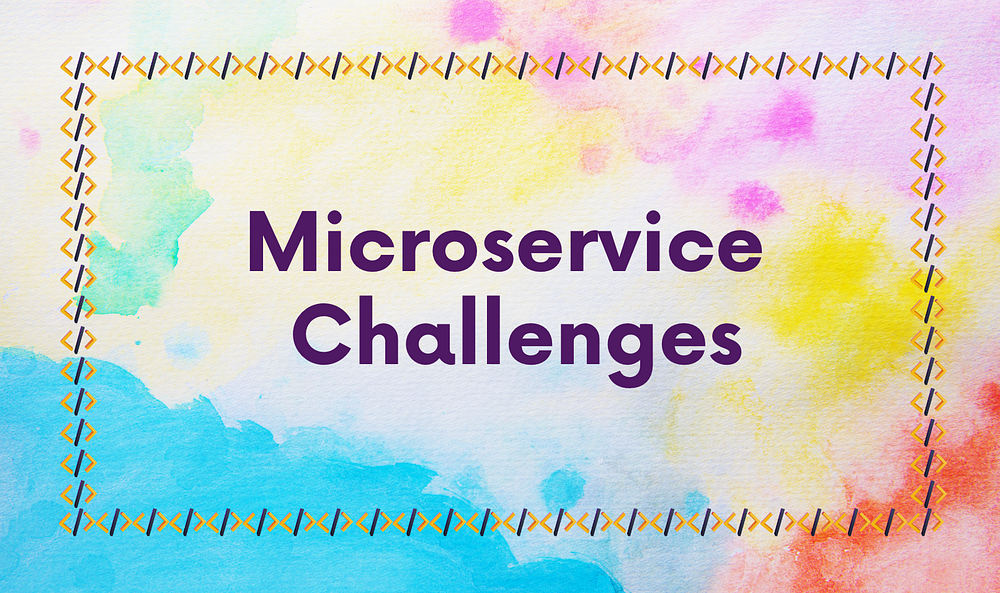
Building with microservices is the hype in 2024. Almost every dev team you talk to leverages microservices in their backend architecture. But, implementing it isn’t as straight forward as it seems.
You have to think about your microservice domains, technical requirements, communication and deployment patterns and even monitoring.
Though microservices are beneficial, you can run into some hiccups if you don’t implement it properly.
Therefore, let’s dig deep and talk about some challenges that you might run into when implementing microservices.
Pst, here’s a summary of the challenges we’re gonna be exploring.
- Complexity
- Service Discovery and Communication
- Data Management and Consistency
- Deployment and DevOps Automation
- Monitoring and Observability
- Service Resilience and Fault Tolerance
- Security
- Team Organization and Communication
- Versioning and Compatibility
- Scalability
1. Complexity
Creating an application with multiple microservices that communicate with one another or breaking down a monolithic application into several microservices, complexity is tough.
It is challenging to manage multiple microservices rather than a solid monolithic application.
To prevent this drawback, we can implement design patterns like Domain-Driven Design (DDD) and Event-Driven Architecture (EDA).
Domain Driven Design (DDD)

Domain-Driven Design (DDD) is the method of software development that focuses on understanding and modeling the problem domain within which a software system operates.
For example, if you were building a banking application using microservices, you can structure your microservices according to these domains:
- Transactions
- Accounts
- Cards
- Users
- Regulations.
By emphasizing clear domain boundaries, bounded contexts, ubiquitous language, context mapping, strategic design, and modularization, we can reduce the complexity of microservices.
Event-Driven Architecture(EDA)
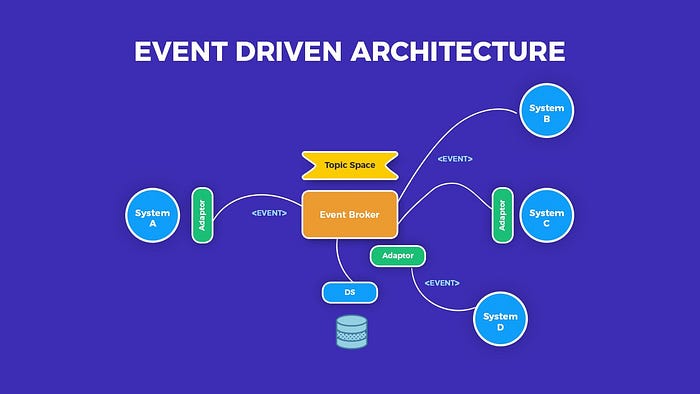
An event-driven architecture uses events to trigger and communicate between decoupled services and is common in modern applications built with microservices.
By having event-driven architecture, we can decouple the services. As a result, even if one service is failing others will keep running.
To know more about EDA, check this out.
Event-Driven Architecture
An event-driven architecture uses events to trigger and communicate between services. Learn more about its benefits…
2. Service Discovery and Communication
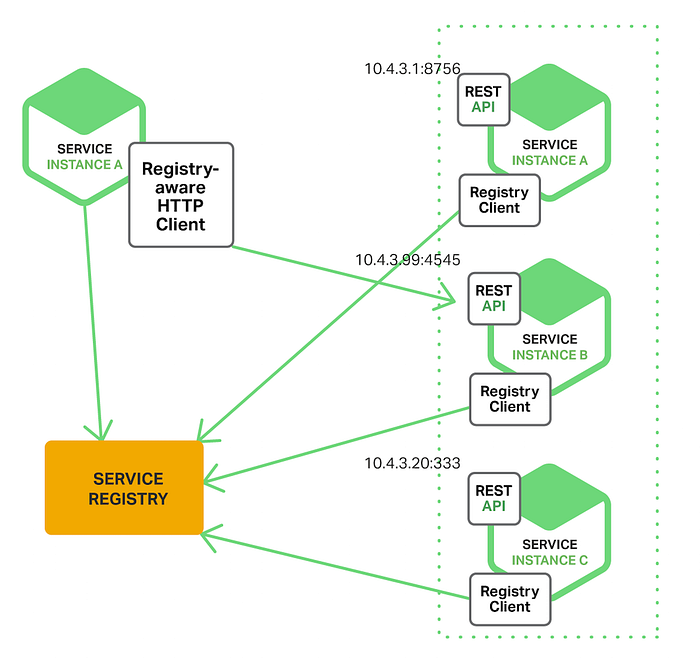
Service discovery is a microservice pattern that lets your services discover one-another and communicate with each other. This is particularly important when you’re working with a lot of microservices.
In a large-scale application, communicating with multiple microservices can become a hassle.
Therefore, it is important to have proper service discovery and communication mechanisms.
Service Discovery Mechanisms
Service discovery mechanisms provide a way for services to register themselves and discover other services within the system without prior knowledge of their locations. This will enable more flexible and resilient communication between services.
Tools for Service Discovery
- Consul
- Eureka
- Kubernetes
The below diagram depicts, how service discovery can be implemented using Kubernetes.
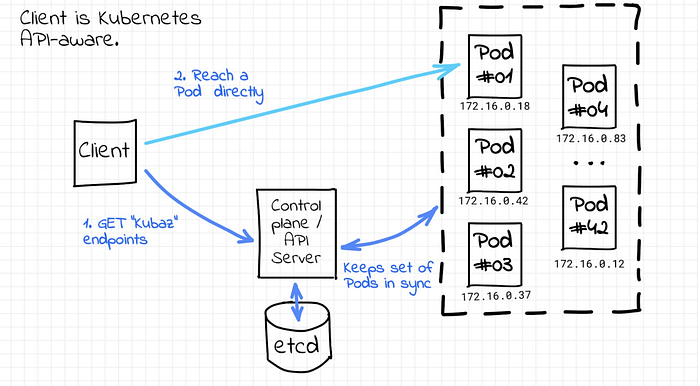
Microservice Communication Techniques
There are two ways that you can communicate between your microservices.
Synchronous Communication
- HTTP/HTTPS — One of the most common communication protocols used in microservices architecture is HTTP(S). You can build REST or GraphQL APIs to communicate between your services.
Asynchronous Communication
- Message Queues- We can implement Asynchronous messaging which sends messages between services through a message broker or message queue. Popular message brokers- RabbitMQ, Apache Kafka, and Amazon Simple Queue Service (SQS).
- Publish-Subscribe Pattern- In this pattern, publishers send messages to a topic, and subscribers receive messages from the topic. Eg- Apache Kafka, Google Cloud Pub/Sub and Amazon SQS.
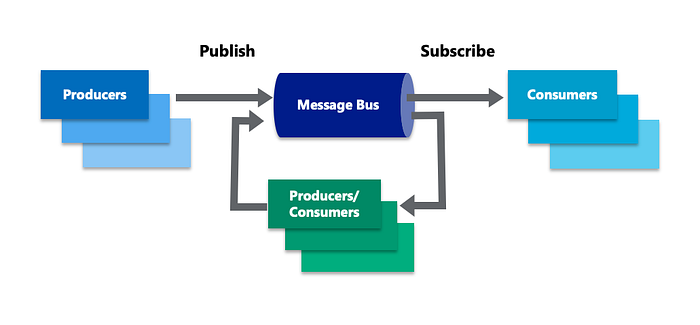
Event-Driven Communication
- Event Bus/Message Broker- Services can communicate through an event bus or message broker by publishing and subscribing to events. Examples include Apache Kafka, RabbitMQ, and AWS EventBridge.
- Event Sourcing- In event sourcing, services store changes to their state as a series of immutable events. Other services can subscribe to these events and update their own state accordingly.
3. Data Management and Consistency
Maintaining data consistency across multiple microservices can be challenging, especially in distributed systems where data is replicated and partitioned across different services.
Replicating data across multiple microservices and maintaining cache consistency can introduce challenges in ensuring data coherence and freshness. Furthermore, microservice architectures often go for polyglot persistence, where different services use different data storage technologies based on their specific requirements. Managing data consistency across different storage systems adds another challenge.
To overcome these challenges we can use the below solutions.
Solutions
- CQRS (Command Query Responsibility Segregation)- Separate read and write operations to optimize data consistency and performance. Use different models for reading and writing data to tailor to specific use cases and scalability requirements.
- Saga Pattern- Implement the saga pattern to coordinate distributed transactions across multiple services. Break down long-running transactions into a series of smaller, compensating actions to ensure atomicity and consistency.
- Eventual Consistency- In many microservices architectures, eventual consistency is preferred over strong consistency due to its scalability and fault tolerance properties.
To learn more about these patterns, check these guides out:
4. Deployment and DevOps Automation
In a microservices architecture, deployment must be carefully handled. To reduce the complexities of deployment, it is better to use automated deployment.
Here’s how deployment and DevOps automation can be implemented in the context of microservices,
1. Continuous Integration/Continuous Deployment (CI/CD)
Based on the diagram, CI/CD pipelines automate the process of building, testing, and deploying microservices, streamlining the delivery pipeline and reducing manual intervention.

2. Containerization
Containerization technologies like Docker provide a lightweight and portable way to package microservices and their dependencies into isolated containers. Containers encapsulate the microservice and its runtime environment, ensuring consistency and reproducibility across different environments.
3. Container Orchestration
Container orchestration platforms like Kubernetes enable organizations to automate the deployment, scaling, and management of containerized microservices. Kubernetes takes away the underlying infrastructure and provides features such as service discovery, load balancing, auto-scaling, and rolling updates, simplifying the management of microservices at scale.
5. Monitoring and Observability
Monitoring and observability are essential components of microservices architecture. It provides insights into the performance, health, and behavior of distributed systems. While monitoring focuses on collecting and analyzing metrics and logs to detect and diagnose issues, observability goes beyond monitoring by enabling deep insights into system behavior and facilitating root cause analysis.
As the architecture becomes complex it is better to use proper monitoring mechanisms.
Monitoring Mechanisms
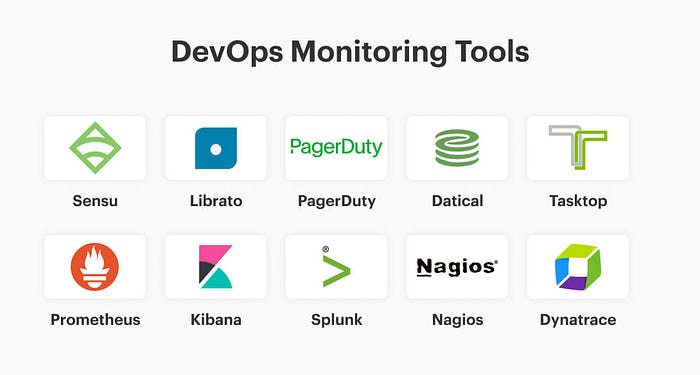
1. Metrics Collection- Metrics provide quantitative data about the performance and behavior of microservices, such as CPU usage, memory consumption, request latency, error rates, and throughput. We can use frameworks like Prometheus, and StatsD to collect and expose metrics.
2. Logging- Logging captures detailed information about the execution flow and events within microservices, such as application logs, error logs, access logs, and debug logs. We can centralize logs from all microservices using log aggregation tools (e.g., ELK stack, Splunk, Fluentd) to facilitate searching, filtering, and analyzing logs across the entire system.
**3. Distributed Tracing-**Distributed tracing enables end-to-end visibility into the flow of requests and transactions across microservices, helping to identify bottlenecks, latency issues, and performance hotspots. We can use distributed tracing frameworks like Jaeger, Zipkin, and OpenTelemetry.
6. Service Resilience and Fault Tolerance
During the shift from monolith architecture to microservices architecture, the main challenge we face is service failures. Ensuring resilience and fault tolerance means building services that can cope with service failures and any timeout occurring due to unknown reasons. If service failures accumulate, this issue can affect other services and lead to clustered failures.
So, here’s are some techniques that you can use to build implement Service Resilience and Fault Tolerance in microservices.
1. Circuit Breaker Pattern
Implement the circuit breaker pattern to handle failures gracefully and prevent cascading failures across microservices.
To find out more, check this guide out:
2. Retries and Timeouts
Use retries and timeouts to handle failures and network timeouts when communicating with other services.
3. Health Checks
Implement health checks to monitor the availability and readiness of microservices and detect failures and degradation in real time. Use health probes and endpoints to report the status of each service and enable automated recovery actions based on health status.
4. Load Balancing
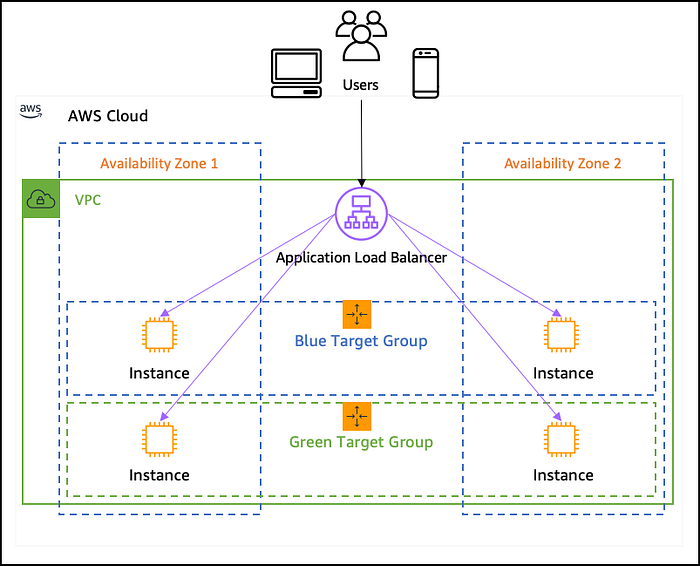
Use load balancing to distribute traffic evenly across multiple instances of a service and improve fault tolerance and scalability.
7. Security
Security is a crucial aspect of microservices architecture. Implementing strong security measures is crucial to protect sensitive data, prevent unauthorized access, and ensure the integrity and confidentiality of microservices-based applications.
By implementing below security measures below, we can address the security concerns in microservices.
Security Mechanisms
1. Authentication and Authorization- Implement strong authentication mechanisms to verify the identity of users and services accessing microservices. Use standards like OAuth2 and OpenID Connect for authentication and JWT for securely transmitting authentication credentials.
2. Secure Communication- It is essential to use secure communication channels to prevent eavesdropping, tampering, and man-in-the-middle attacks. Use Transport Layer Security (TLS) to encrypt communication over networks and ensure data confidentiality and integrity. Implement mutual TLS (mTLS) to authenticate both clients and services and establish secure end-to-end communication.
3. Input Validation and Sanitization- Validate and sanitize inputs to microservices to prevent injection attacks, such as SQL injection, XSS, and CSRF. Let’s look at the below example. We have added annotations to validate the input of an API.
@IsNotEmpty()
accountNumber:string;
@IsNotEmpty()
slug:string ;
@IsNotEmpty()
@IsIn([PAYMENT_TYPE.BILL, PAYMENT_TYPE.RELOAD])
paymentType: string;
4. Data Encryption- Encrypt sensitive data at rest and in transit to protect it from unauthorized access and disclosure. Use strong encryption algorithms and cryptographic protocols to encrypt data stored in databases. Implement encryption mechanisms (e.g., AES, RSA) to encrypt data. Let’s look at the below example.
async objectEncrypt(data, token) {
const decodedAuthToken = await JSON.parse(
Buffer.from(token.split('.')[1], 'base64').toString('utf-8'),
);
const tokenMsisdn = decodedAuthToken?.pld?.msisdn;
const encreptionKey = await this.getEncryptionKey(tokenMsisdn);
if (!encreptionKey) {
throw new HttpException(
{ message: `Unauthorized user` },
HttpStatus.FORBIDDEN,
);
}
return CryptoJS.AES.encrypt(JSON.stringify(data), encreptionKey).toString();
}
5. Security Testing- Conduct regular security testing and vulnerability assessments of microservices-based applications to identify and remediate security vulnerabilities and weaknesses.
8. Team Organization and Communication
As the number of microservices increases, it is essential to have proper communication and ownership between teams. It is considered a challenge while implementing microservices.
To have better team organization and proper communication between teams, the below mechanisms can be implemented.
1. Cross-Functional Collaboration
Encourage cross-functional collaboration and knowledge sharing between teams. Conduct regular sync-ups, workshops, and cross-team meetings to align priorities and share insights.
2. Clear Ownership and Accountability
Define clear ownership and accountability for each microservice or service team, including responsibilities, deliverables, and success metrics. Motivate teams to make decisions within their areas of ownership while ensuring alignment with goals.
3. Communication Channels
Establish clear communication channels and tools like Slack, Microsoft Teams, and Jira to facilitate communication and collaboration between teams. Encourage open communication and transparency and enable sharing updates, announcements, and discussions.

9. Versioning and Compatibility
Creating microservices with backward and forward compatibility between microservices versions can be challenging As a result, it would lead to dependency management issues. Therefore, it is crucial to have proper versioning.
Strategies for Versioning and Compatibility
1. Semantic Versioning (SemVer)
Adopt semantic versioning to indicate the compatibility of changes to microservices. Semantic versioning consists of major, minor, and patch version numbers.
2. API Versioning
Maintain API versions to manage changes to service interfaces and contracts. Use URL versioning or header versioning to differentiate between different API versions. Let’s look at the below example.
@Version('1')
@Post()
async getPaymentReceipt(@Body() paymentDto: PaymentDto) {
try {
const paymentData = await this.paymentService.getPayment(paymentDto);
return paymentData;
} catch (error) {
throw new HttpException(error?.message, error?.status);
}
}
@Version('2')
@Post()
async getPaymentReceipt(@Body() paymentDto: PaymentDto) {
try {
const paymentData = await this.paymentService.getPayment(paymentDto);
return paymentData;
} catch (error) {
throw new HttpException(error?.message, error?.status);
}
}
3. Backward Compatibility
We must design services to be backward compatible with older versions of clients. Avoid breaking changes to APIs, data formats, or behavior without providing backward-compatible alternatives or deprecation periods.
4. Deprecation Policies
Proper deprecation policies need to be implemented. We should communicate timelines for deprecation and provide migration paths and upgrade guides to help consumers transition to newer versions.
10. Scalability
Scalability is another core challenge developers have to face when implementing microservices. Having scalable microservices will enable organizations to accommodate increasing workloads and traffic patterns while maintaining performance.
Here’s how scalability can be achieved in microservices,
1. Horizontal Scaling
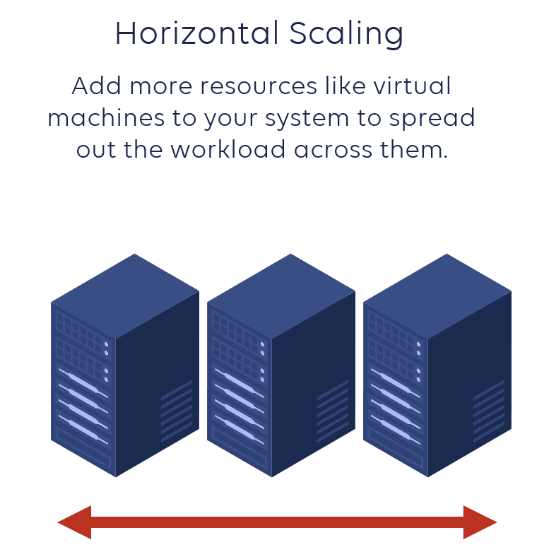
Horizontal scaling involves adding more instances of microservices to distribute the workload and handle increased traffic. Microservices are designed to be stateless and independently scalable, allowing organizations to scale individual services horizontally.
2. Container Orchestration
Container orchestration platforms like Kubernetes enable organizations to automate the deployment, scaling, and management of containerized microservices.
3. Auto-Scaling
Auto-scaling mechanisms automatically adjust the number of instances of microservices based on predefined criteria such as CPU utilization, memory usage, or request throughput.
4. Service Meshes
Implement service meshes like Istio or Linkerd to manage service-to-service communication and traffic routing in microservices architectures. Service meshes provide features such as load balancing, traffic shaping, and circuit breaking, enabling organizations to scale microservices transparently and efficiently.
Wrapping Up
We’ve looked at the top 10 challenges in implementing microservices. It is essential to handle these challenges to create solid microservices.
Here’s a quick recap of what we learned today:
- Complexity Management: Utilize Domain-Driven Design (DDD) and Event-Driven Architecture (EDA) to tame the inherent complexity of microservices.
- Service Discovery and Communication: Implement robust service discovery mechanisms and communication patterns, such as HTTP/HTTPS for synchronous and message queues for asynchronous communication.
- Data Management and Consistency: Adopt strategies like CQRS and the Saga pattern to ensure data consistency across services.
- Deployment and DevOps Automation: Leverage CI/CD pipelines, containerization, and orchestration tools like Kubernetes to streamline deployment processes.
- Monitoring and Observability: Utilize metrics collection, logging, and distributed tracing to gain insights into the health and performance of microservices.
- Service Resilience and Fault Tolerance: Implement the Circuit Breaker pattern, retries, timeouts, and health checks to build resilient and fault-tolerant systems.
- Security: Ensure robust security practices including authentication, secure communication, input validation, and data encryption to safeguard your microservices.
- Team Organization and Communication: Foster cross-functional collaboration, define clear ownership, and establish effective communication channels.
- Versioning and Compatibility: Apply semantic versioning and maintain API versions to manage changes and ensure compatibility.
- Scalability: Achieve scalability through horizontal scaling, auto-scaling, and the use of service meshes for efficient traffic management.
I hope you have found this helpful.
Thank you for reading!
Recommend
About Joyk
Aggregate valuable and interesting links.
Joyk means Joy of geeK